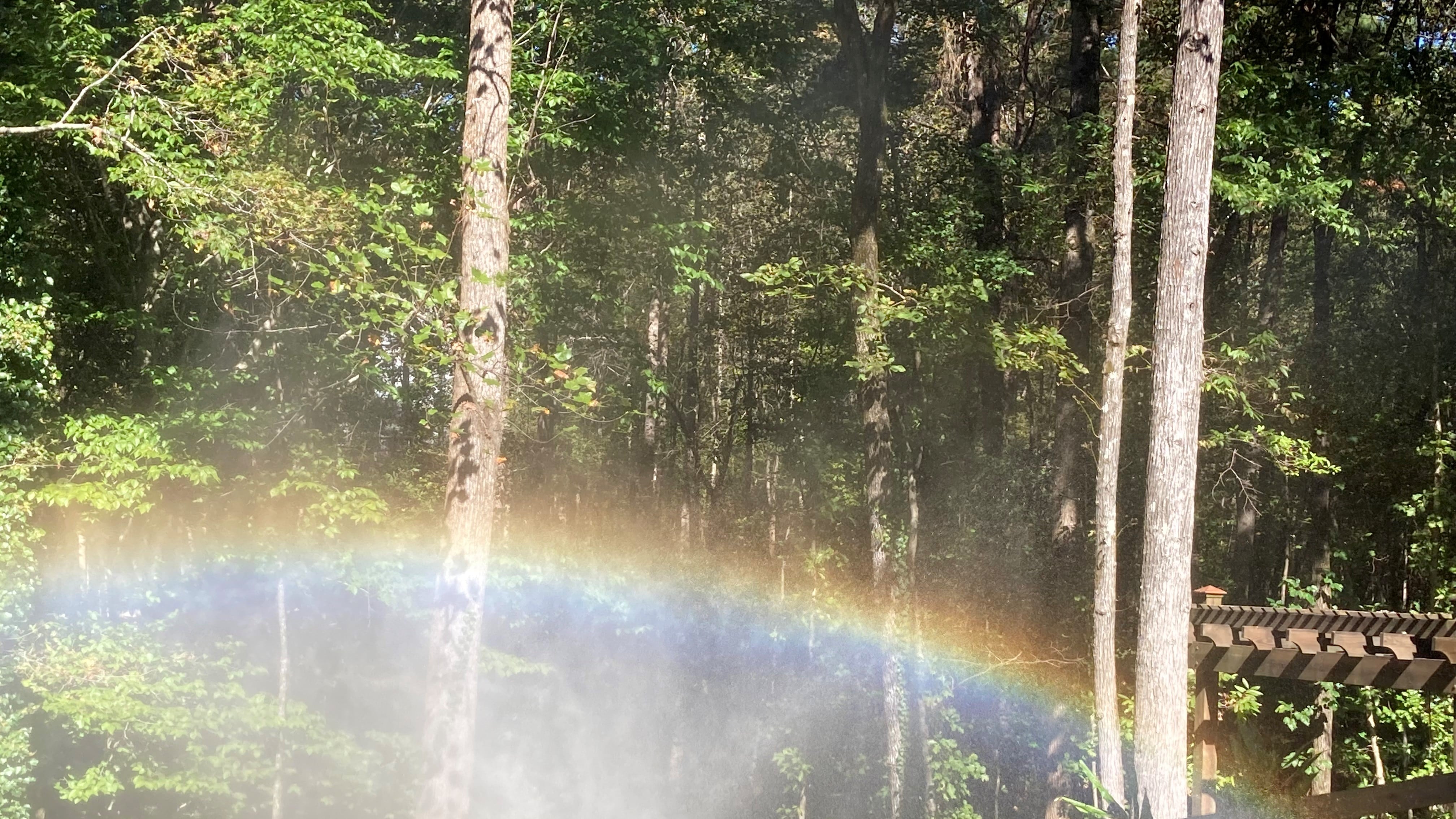UGA Turfgrass Specialist Clint Waltz spent time on the show the last weekend of October, and I shared with him many of the questions that have been on your mind!
“Do you have to blow leaves off the grass to effectively water a new lawn?”
A: “No, they don’t hamper the irrigation getting to the grass, but they could cause other problems. Remove the leaves, allowing the water to dry out on the grass canopy to prevent disease. Also, if the grass is still green, it’s photosynthesizing, producing sugars that go down to reserves to help the grass green-up next spring. Those leaves are shading photosynthesis, which could slow green-up next spring.”
“Is preemergence beneficial if put out in November?”
A: “Ideal application was by mid-September, but yes, it’s still a good idea. Winter weeds like annual bluegrass (poa annua) germinate all winter long, and you can reduce the overall population by getting preemergence out now. It’ll get to anything that would germinate in January or February.”
“What is the best shade-tolerant fescue out there right now?”
A: “Tall fescue as we know it has pretty good shade tolerance. At UGA, our tall fescue trials look at more than 140 cultivars, and we don’t have that much shade. Most tall fescues can take down to 3-4 hours of filtered sun.”
“How long into seed establishment do you water?”
A: “Until you get germination. Keep enough water to get germination, which could happen in 5-10 days. Keep it good and moist because it has little to no root system. Once you get good germination, and you see those seedlings get up to 1.5″ or 2″, you can start to pull the water back. Maybe go to watering once a day, and start going longer with deeper waterings. So, I’d say water pretty heavily for the first 7-10 days, then scale it back to once a week or once every 10 days. ‘Deep and infrequent’ is a term we use in turf a lot when it comes to irrigation. And you can start mowing a new fescue lawn about this time. Let it dry down a little bit before you mow.”
“Is the needed amount of water dependent on grass type this time of year? Do needed irrigation amounts change?”
A: “You should need less water on grasses going dormant because growth is slowing. But you do want to keep them hydrated, especially because October was dry and humidity was low; desiccation, or drying out is occurring. Still, irrigating once a week at about ¾” to 1″ is not a bad idea for a warm season grasses.”
“What about the bags in the big box stores that are ‘winterizers’?”
A: “Don’t fall for bad marketing. Don’t use a winterizer fertilizer on a warm season grasses like Bermuda or zoysia. They typically have nitrogen in them, and our warm season grasses don’t need that. Dormancy is signaling grass to slow down its growth.”
©2023 Cox Media Group








